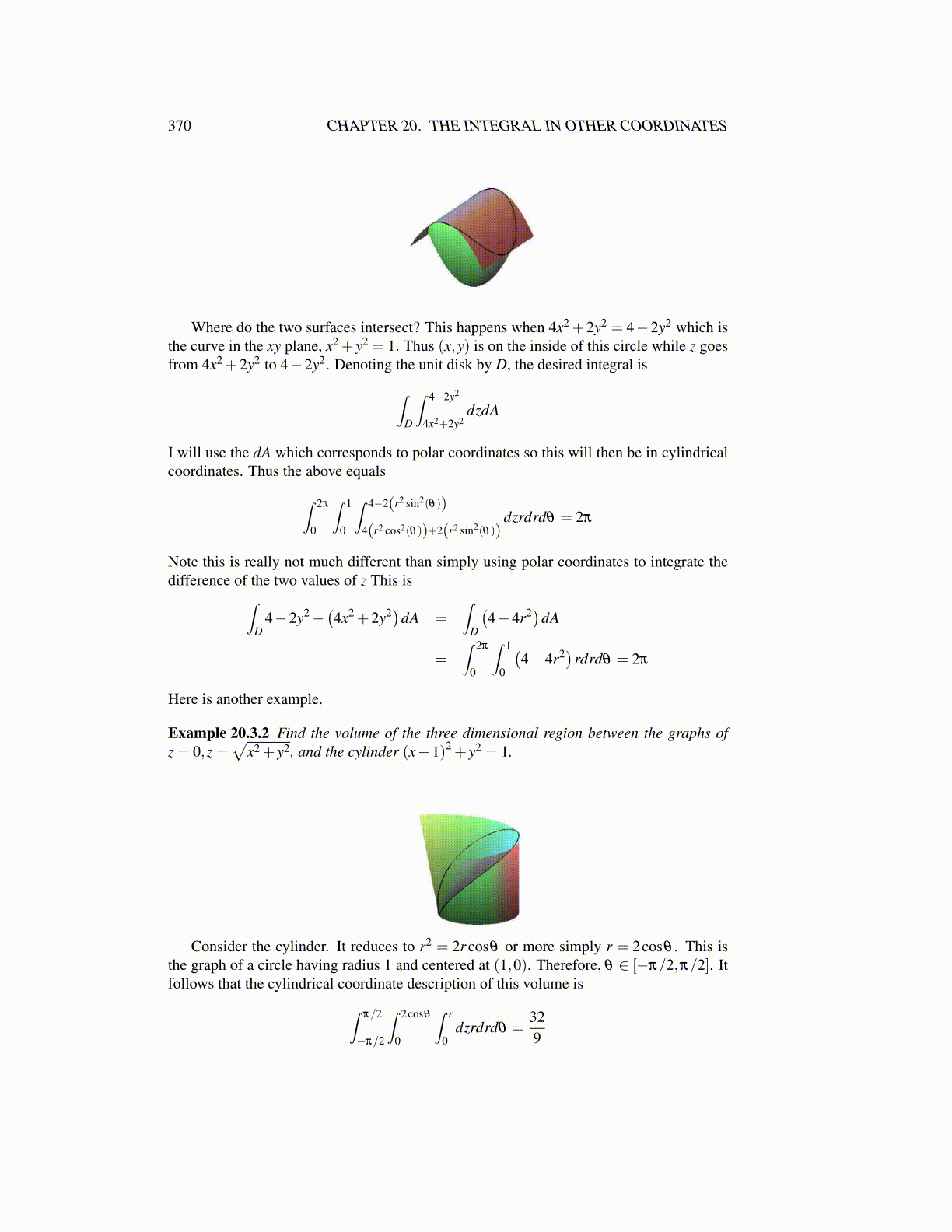
370 CHAPTER 20. THE INTEGRAL IN OTHER COORDINATES
Where do the two surfaces intersect? This happens when 4x2 +2y2 = 4−2y2 which isthe curve in the xy plane, x2 +y2 = 1. Thus (x,y) is on the inside of this circle while z goesfrom 4x2 +2y2 to 4−2y2. Denoting the unit disk by D, the desired integral is
∫D
∫ 4−2y2
4x2+2y2dzdA
I will use the dA which corresponds to polar coordinates so this will then be in cylindricalcoordinates. Thus the above equals
∫ 2π
0
∫ 1
0
∫ 4−2(r2 sin2(θ))
4(r2 cos2(θ))+2(r2 sin2(θ))dzrdrdθ = 2π
Note this is really not much different than simply using polar coordinates to integrate thedifference of the two values of z This is∫
D4−2y2−
(4x2 +2y2)dA =
∫D
(4−4r2)dA
=∫ 2π
0
∫ 1
0
(4−4r2)rdrdθ = 2π
Here is another example.
Example 20.3.2 Find the volume of the three dimensional region between the graphs ofz = 0,z =
√x2 + y2, and the cylinder (x−1)2 + y2 = 1.
Consider the cylinder. It reduces to r2 = 2r cosθ or more simply r = 2cosθ . This isthe graph of a circle having radius 1 and centered at (1,0). Therefore, θ ∈ [−π/2,π/2]. Itfollows that the cylindrical coordinate description of this volume is∫
π/2
−π/2
∫ 2cosθ
0
∫ r
0dzrdrdθ =
329